Arguments over Northwest coal exports have been hot and heavy in 2011. As one might expect, there’s been plenty of disagreement about values, but there’s also been quite a bit of disagreement over facts. After nearly a year of wrangling, here’s my attempt to establish a few foundational and un-contestable basics about coal export dynamics. Even if we disagree, we can at least argue from a common view of reality.
So here’s a fact: the US currently exports about 80 million tons of coal per year, including both thermal coal and metallurgical coal. That figure was sometimes higher during the 1980s and 1990s, but it’s been even lower in recent years.
In other words, plans for Northwest coal exports—moving 60 million tons from Longview, Washington plus 50 million tons from Bellingham, Washington—would more than double the existing total volume of US coal exports.
Here’s another fact: only a fraction of US coal exports go to Asia.
The biggest destination by far is Europe (orange line). Brazil is also a major importer (blue line). Yet imports to Asia are not insignificant. In addition to Japan (dark red line), exports to Asia account for some share of the “other” category (purple line). They also account for some of the exports to Canada (green line), which transships some US coal to market in Asia. [Author’s note: I was unable to find more detailed country-level export data at the EIA website. If it exists, please send it to me.]
Who are the biggest coal importers on earth? Taken together, the nations of Europe are the biggest importer by a hair. But Asian countries buy nearly two-thirds of all the world’s imported coal.
Among Asian countries, more than 90 percent of all coal imported flows to just five countries—Japan, China, South Korea, India, and Taiwan–while smaller amounts are purchased by countries like Malaysia, Thailand, the Philippines, and Hong Kong.
By any reckoning, the 110 million tons planned for Northwest ports would represent a very sizeable contribution to internationally traded coal in Asia. It’s more coal, in fact, than is imported annually by India.
And who are the biggest global coal exporters? Australia and Indonesia by a landslide, where coal exports have shot up recently far beyond levels projected just a few years ago.
Even at current levels—roughly 80 million tons per year—the US is already a major player in global coal exports, the fourth biggest by volume. Yet the exports planned for the Northwest would launch the country into the big leagues, which means that the decisions at Northwest ports have global significance.
Here’s another fact: the United States is sitting on a lot more coal than any other country on earth.
In fact, the US owns more than one-fourth of the entire planet’s recoverable coal, far more than the next biggest coal countries: Russia, China, Australia, and India. To a very large extent then, what the US decides to do with its coal is what the world will do about coal.
Yet the biggest consumer of coal is China by far, which is burning 3.7 billion tons per year, nearly half of all the coal burned on earth. It’s energy policy decisions in China that will drive trends in global coal burning.
The world’s next biggest consumers, Europe and the United States, each combust around 1 billion tons of coal per year, though coal consumption is waning quickly in most wealthy nations. In other words, the coal exports planned for the Northwest would amount to about 10 percent of the coal consumed annually in the US.
So these are at least a few of the elemental facts that should bear on the Northwest’s evaluation of coal export proposals. If there are other baseline pieces of information that readers want, please leave ideas in comments as I’d be happy to consider posting them here. For now, I’ll leave interpretation of these facts to future blog posts and, I imagine, our eager commenters.
Notes: All figures in the post are derived from the official data provided by the US Energy Information Administration, here. The figures in this post refer to all types of coal, and do not distinguish between thermal and metallurgical coal.
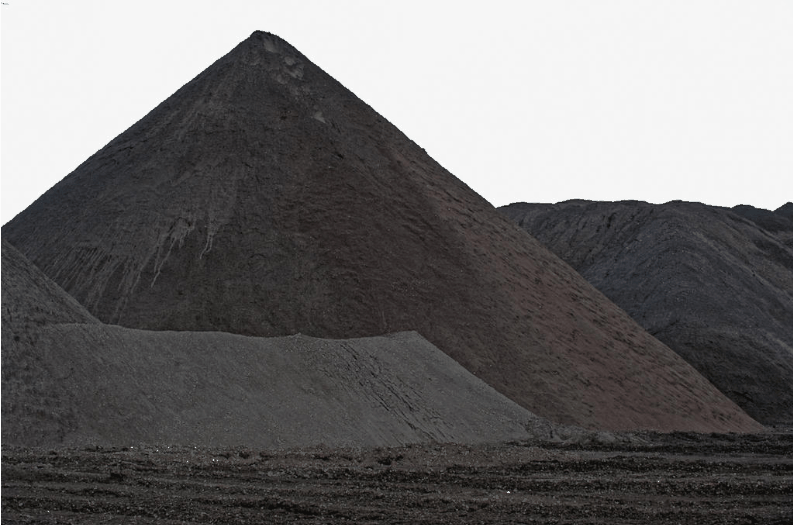
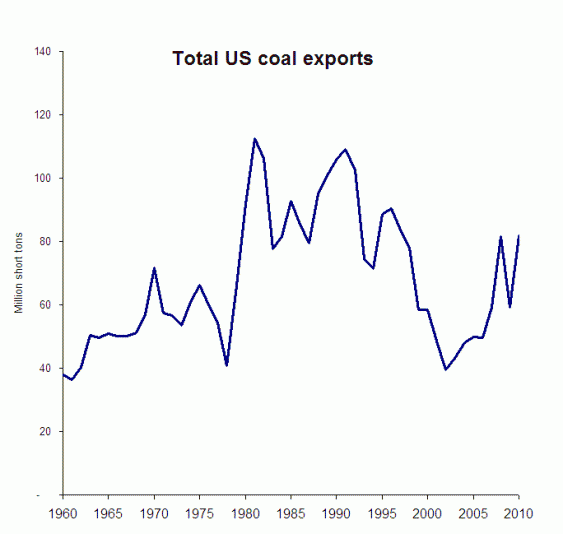

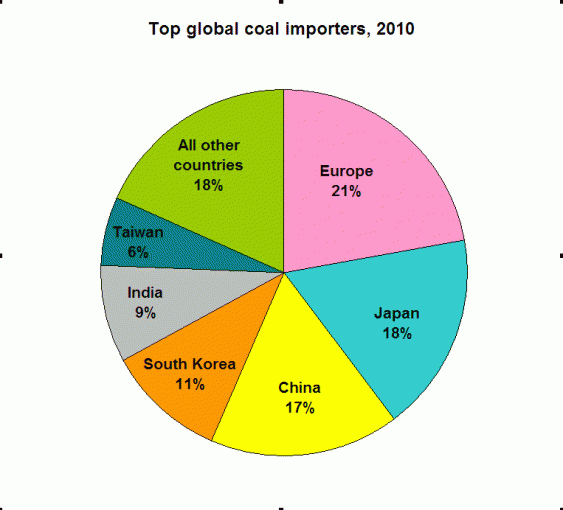
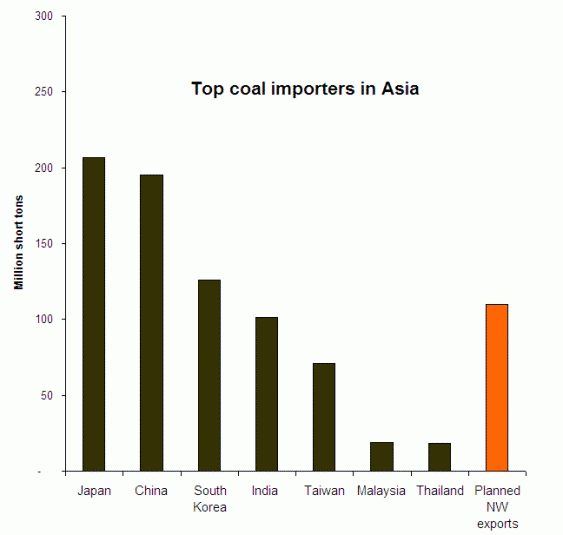
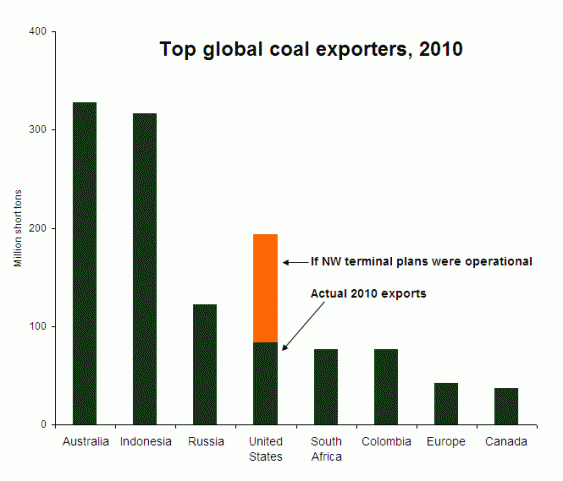
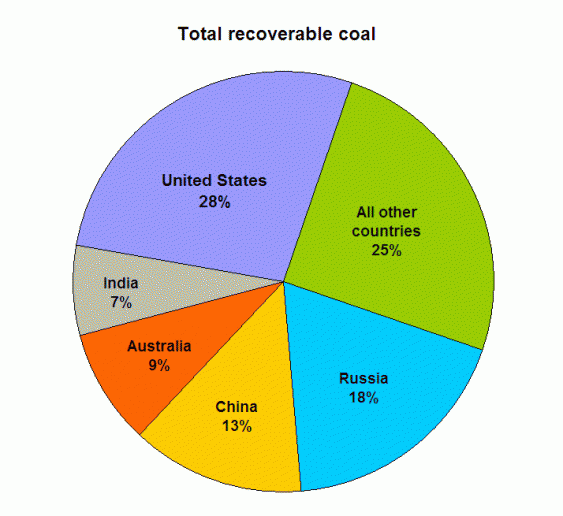
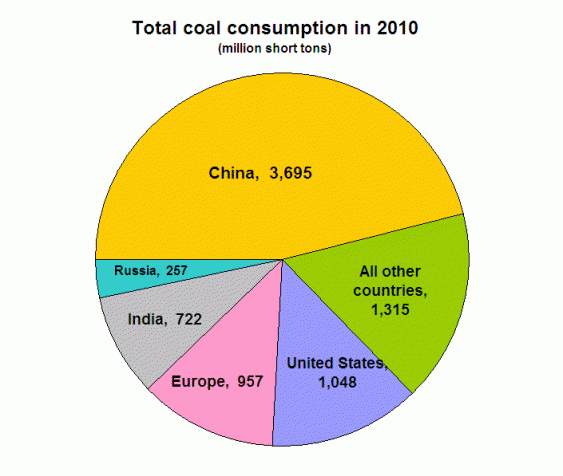

Comments are closed.